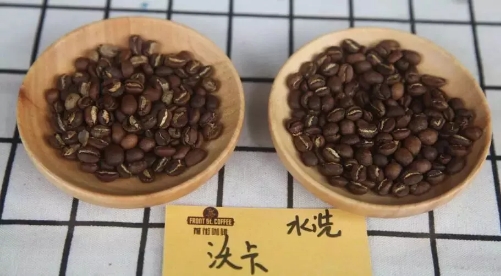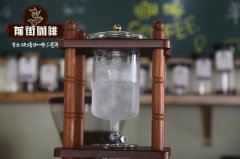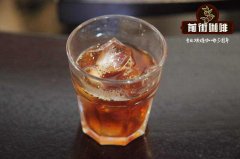The relationship between Java Coffee and java. How is Java Coffee? is it good?

Professional coffee knowledge exchange more coffee bean information please follow the coffee workshop (Wechat official account cafe_style)
Coffee production in Asia is second only to Central and South America. Indonesia has always been the largest coffee producer in Asia, but the situation has changed in recent years. With the aid of the Olympic Games of the World Bank, Vietnam's production expanded rapidly and officially squeezed out of Indonesia in 1999 to become the largest coffee producer in Asia. However, Vietnam is dominated by sturdy beans, which does not belong to the category of boutique coffee. Vietnam produced 957000 tons of coffee in 2007, making it the largest coffee producer in Asia and the second largest coffee producer in the world. Indonesia produced 420000 tons of coffee beans in the same year, ranking second in Asia. India produces 291000 tons of coffee beans, ranking third in Asia. The body of Asian coffee is higher than that of Central and South American and African beans, but its sour taste is lower, with slightly sunken wood, herb, spice and earthy flavor, and the low and stuffy flavor is higher than the rising sour flavor.
Indonesian coffee-smelling, low acid, good mellow
At the end of the 17th century, the Dutch East India Company transplanted Indian Arabica trees to Jakarta on the island of Java. Due to the favorable climate and soil, Arabica quickly spread to Sumatra in the northwest of Java and Sulawesi, another large island in the northeast. However, in the 1880s, when serious leaf rust broke out in Java and Arabica withered, the Dutch switched to the case-resistant Robusta species to stabilize Indonesia's coffee industry. To this day, Robusta is still the main coffee in Indonesia, accounting for 90% of Indonesia's coffee production, distributed in the low-altitude areas of Java and Bali. The elegant Arabica is mainly distributed in the higher elevations of northern Sumatra, Sulawesi and Java, accounting for only about 10% of Indonesia's coffee production, but the reputation of Mantenin, Golden Mantenin, Lake Lake Tawar, Gayo Mountain, Ache, Sulawesi, Old Manning and Old Brown Java has made Indonesian coffee famous in the boutique world for decades. Not dragged down by other inferior Robusta species.
Java coffee produced in Java, Indonesia, originally belongs to Arabica coffee. Diseases and insect pests make Java, which is rich in high-quality Arabica coffee, switch to Robusta coffee for fear of diseases and insect pests. Arabica Java coffee, which people regard as a treasure, has been out of sight ever since, and people's unlimited favor and pursuit of Java coffee has been lost ever since.
Indonesian coffee is graded according to the proportion of defects, which is divided into 6 grades, with G1-- G6, G6, and G1 being the highest. Java coffee beans are collected and washed.
Java Arabica coffee has a wonderful fruit flavor, with a BlackBerry and grapefruit flavor, is a favorite of many coffee glutton. This coffee has an excellent medium purity, crisp and refreshing taste. It has a fresh flavor and is most suitable for drinking iced coffee in summer. When tasting this coffee, if paired with fruit with acidity such as grapefruit, it will certainly give you the best coffee experience.
The bitterness and mellowness of Java coffee, coupled with the sweetness of chocolate syrup, make Java coffee more mellow and palatable and very popular with women!
Cup test
Dry fragrance: full-bodied and thick, with sweet aroma of nuts
Wet fragrance: nutty aroma, special tobacco aroma
Flavors: BlackBerry, chocolate syrup and grape sweetness, clear balance of acidity and bitterness.
Suitable for baking: 4 optional baking degree 3-8
END
Important Notice :
前街咖啡 FrontStreet Coffee has moved to new addredd:
FrontStreet Coffee Address: 315,Donghua East Road,GuangZhou
Tel:020 38364473
- Prev

Where does Hawaiian Kona Coffee come from in the United States? regional flavor and taste characteristics of Hawaiian Kona coffee
For more information on coffee beans, please follow the coffee workshop (Wechat official account cafe_style) Hawaiian Kona Coffee is produced in the Kona area of Hawaii and is a rare species that can only be grown on volcanic slopes. Taste strong, mellow, and slightly with a kind of wine aroma, the flavor is very special. The selected Kona coffee has a moderate sour taste and a gentle and rich taste, as well as a
- Next

Which variety of Hawaiian Kona coffee beans is Arabica beans? what are the taste and flavor characteristics?
For more information about coffee beans, please follow the coffee workshop (Wechat official account cafe_style) Hawaii, a beautiful tropical Pacific island, which also produces the famous Kona coffee in addition to its beautiful scenery. Kona is also named after origin, only on the southwest coast of Hawaii, 20 miles long and 2 miles wide, 150m to 750m above sea level, covering Hu
Related
- Does Rose Summer choose Blue, Green or Red? Detailed explanation of Rose Summer Coffee plots and Classification in Panamanian Jade Manor
- What is the difference between the origin, producing area, processing plant, cooperative and manor of coffee beans?
- How fine does the espresso powder fit? how to grind the espresso?
- Sca coffee roasting degree color card coffee roasting degree 8 roasting color values what do you mean?
- The practice of lattes: how to make lattes at home
- Introduction to Indonesian Fine Coffee beans-- Java Coffee producing area of Indonesian Arabica Coffee
- How much will the flavor of light and medium roasted rose summer be expressed? What baking level is rose summer suitable for?
- Introduction to the characteristics of washing, sun-drying or wet-planing coffee commonly used in Mantenin, Indonesia
- Price characteristics of Arabica Coffee Bean Starbucks introduction to Manning Coffee Bean Taste producing area Variety Manor
- What is the authentic Yega flavor? What are the flavor characteristics of the really excellent Yejasuffi coffee beans?

